HSBC 2005 Annual Report Download - page 20
Download and view the complete annual report
Please find page 20 of the 2005 HSBC annual report below. You can navigate through the pages in the report by either clicking on the pages listed below, or by using the keyword search tool below to find specific information within the annual report.-
 1
1 -
 2
2 -
 3
3 -
 4
4 -
 5
5 -
 6
6 -
 7
7 -
 8
8 -
 9
9 -
 10
10 -
 11
11 -
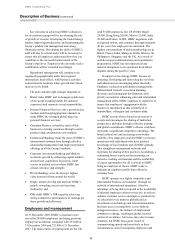 12
12 -
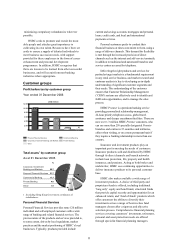 13
13 -
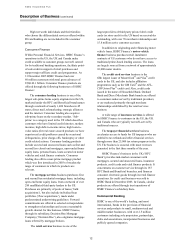 14
14 -
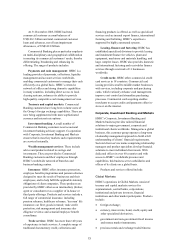 15
15 -
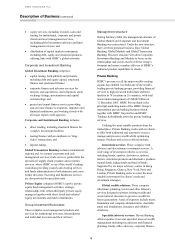 16
16 -
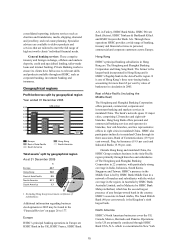 17
17 -
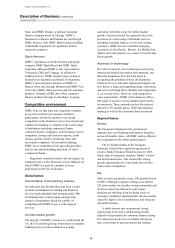 18
18 -
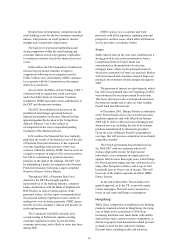 19
19 -
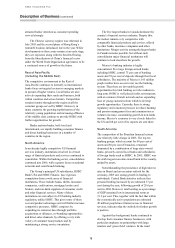 20
20 -
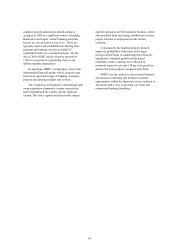 21
21 -
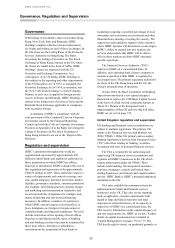 22
22 -
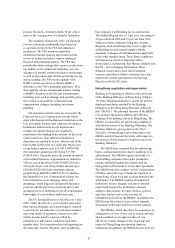 23
23 -
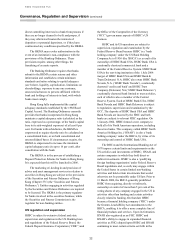 24
24 -
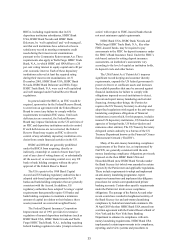 25
25 -
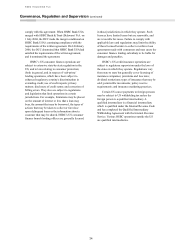 26
26 -
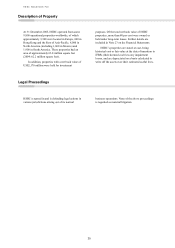 27
27 -
 28
28 -
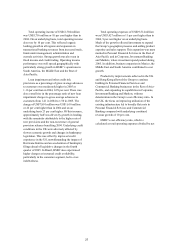 29
29 -
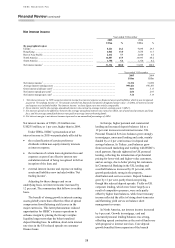 30
30 -
 31
31 -
 32
32 -
 33
33 -
 34
34 -
 35
35 -
 36
36 -
 37
37 -
 38
38 -
 39
39 -
 40
40 -
 41
41 -
 42
42 -
 43
43 -
 44
44 -
 45
45 -
 46
46 -
 47
47 -
 48
48 -
 49
49 -
 50
50 -
 51
51 -
 52
52 -
 53
53 -
 54
54 -
 55
55 -
 56
56 -
 57
57 -
 58
58 -
 59
59 -
 60
60 -
 61
61 -
 62
62 -
 63
63 -
 64
64 -
 65
65 -
 66
66 -
 67
67 -
 68
68 -
 69
69 -
 70
70 -
 71
71 -
 72
72 -
 73
73 -
 74
74 -
 75
75 -
 76
76 -
 77
77 -
 78
78 -
 79
79 -
 80
80 -
 81
81 -
 82
82 -
 83
83 -
 84
84 -
 85
85 -
 86
86 -
 87
87 -
 88
88 -
 89
89 -
 90
90 -
 91
91 -
 92
92 -
 93
93 -
 94
94 -
 95
95 -
 96
96 -
 97
97 -
 98
98 -
 99
99 -
 100
100 -
 101
101 -
 102
102 -
 103
103 -
 104
104 -
 105
105 -
 106
106 -
 107
107 -
 108
108 -
 109
109 -
 110
110 -
 111
111 -
 112
112 -
 113
113 -
 114
114 -
 115
115 -
 116
116 -
 117
117 -
 118
118 -
 119
119 -
 120
120 -
 121
121 -
 122
122 -
 123
123 -
 124
124 -
 125
125 -
 126
126 -
 127
127 -
 128
128 -
 129
129 -
 130
130 -
 131
131 -
 132
132 -
 133
133 -
 134
134 -
 135
135 -
 136
136 -
 137
137 -
 138
138 -
 139
139 -
 140
140 -
 141
141 -
 142
142 -
 143
143 -
 144
144 -
 145
145 -
 146
146 -
 147
147 -
 148
148 -
 149
149 -
 150
150 -
 151
151 -
 152
152 -
 153
153 -
 154
154 -
 155
155 -
 156
156 -
 157
157 -
 158
158 -
 159
159 -
 160
160 -
 161
161 -
 162
162 -
 163
163 -
 164
164 -
 165
165 -
 166
166 -
 167
167 -
 168
168 -
 169
169 -
 170
170 -
 171
171 -
 172
172 -
 173
173 -
 174
174 -
 175
175 -
 176
176 -
 177
177 -
 178
178 -
 179
179 -
 180
180 -
 181
181 -
 182
182 -
 183
183 -
 184
184 -
 185
185 -
 186
186 -
 187
187 -
 188
188 -
 189
189 -
 190
190 -
 191
191 -
 192
192 -
 193
193 -
 194
194 -
 195
195 -
 196
196 -
 197
197 -
 198
198 -
 199
199 -
 200
200 -
 201
201 -
 202
202 -
 203
203 -
 204
204 -
 205
205 -
 206
206 -
 207
207 -
 208
208 -
 209
209 -
 210
210 -
 211
211 -
 212
212 -
 213
213 -
 214
214 -
 215
215 -
 216
216 -
 217
217 -
 218
218 -
 219
219 -
 220
220 -
 221
221 -
 222
222 -
 223
223 -
 224
224 -
 225
225 -
 226
226 -
 227
227 -
 228
228 -
 229
229 -
 230
230 -
 231
231 -
 232
232 -
 233
233 -
 234
234 -
 235
235 -
 236
236 -
 237
237 -
 238
238 -
 239
239 -
 240
240 -
 241
241 -
 242
242 -
 243
243 -
 244
244 -
 245
245 -
 246
246 -
 247
247 -
 248
248 -
 249
249 -
 250
250 -
 251
251 -
 252
252 -
 253
253 -
 254
254 -
 255
255 -
 256
256 -
 257
257 -
 258
258 -
 259
259 -
 260
260 -
 261
261 -
 262
262 -
 263
263 -
 264
264 -
 265
265 -
 266
266 -
 267
267 -
 268
268 -
 269
269 -
 270
270 -
 271
271 -
 272
272 -
 273
273 -
 274
274 -
 275
275 -
 276
276 -
 277
277 -
 278
278 -
 279
279 -
 280
280 -
 281
281 -
 282
282 -
 283
283 -
 284
284 -
 285
285 -
 286
286 -
 287
287 -
 288
288 -
 289
289 -
 290
290 -
 291
291 -
 292
292 -
 293
293 -
 294
294 -
 295
295 -
 296
296 -
 297
297 -
 298
298 -
 299
299 -
 300
300 -
 301
301 -
 302
302 -
 303
303 -
 304
304 -
 305
305 -
 306
306 -
 307
307 -
 308
308 -
 309
309 -
 310
310 -
 311
311 -
 312
312 -
 313
313 -
 314
314 -
 315
315 -
 316
316 -
 317
317 -
 318
318 -
 319
319 -
 320
320 -
 321
321 -
 322
322 -
 323
323 -
 324
324 -
 325
325 -
 326
326 -
 327
327 -
 328
328 -
 329
329 -
 330
330 -
 331
331 -
 332
332 -
 333
333 -
 334
334 -
 335
335 -
 336
336 -
 337
337 -
 338
338 -
 339
339 -
 340
340 -
 341
341 -
 342
342 -
 343
343 -
 344
344 -
 345
345 -
 346
346 -
 347
347 -
 348
348 -
 349
349 -
 350
350 -
 351
351 -
 352
352 -
 353
353 -
 354
354 -
 355
355 -
 356
356 -
 357
357 -
 358
358 -
 359
359 -
 360
360 -
 361
361 -
 362
362 -
 363
363 -
 364
364 -
 365
365 -
 366
366 -
 367
367 -
 368
368 -
 369
369 -
 370
370 -
 371
371 -
 372
372 -
 373
373 -
 374
374 -
 375
375 -
 376
376 -
 377
377 -
 378
378 -
 379
379 -
 380
380 -
 381
381 -
 382
382 -
 383
383 -
 384
384 -
 385
385 -
 386
386 -
 387
387 -
 388
388 -
 389
389 -
 390
390 -
 391
391 -
 392
392 -
 393
393 -
 394
394 -
 395
395 -
 396
396 -
 397
397 -
 398
398 -
 399
399 -
 400
400 -
 401
401 -
 402
402 -
 403
403 -
 404
404 -
 405
405 -
 406
406 -
 407
407 -
 408
408 -
 409
409 -
 410
410 -
 411
411 -
 412
412 -
 413
413 -
 414
414 -
 415
415 -
 416
416 -
 417
417 -
 418
418 -
 419
419 -
 420
420 -
 421
421 -
 422
422 -
 423
423 -
 424
424
 |
 |

HSBC HOLDINGS PLC
Description of Business (continued)
18
attracted banks’ attention as consumer spending
revived strongly.
The Chinese currency regime was reformed in
July 2005 and the second phase of Hong Kong’s
renminbi business introduced late in the year. While
developments in these areas remain at an early stage,
they are expected, along with the benefits flowing
from the liberalisation of China’s financial sector
under the World Trade Organisation agreement, to be
a continued source of growth in the future.
Rest of Asia-Pacific
(including the Middle East)
The competitive environment in the Rest of
Asia-Pacific continues to intensify as international
banks focus on targeted sectors in emerging markets
in pursuit of higher returns. Local banks are also
actively expanding their reach and business, both
within countries and across borders. Competition
remains intense throughout the region in all the
customer groups served by HSBC. However, in
many countries the growing sophistication of the
relatively young population and increasing affluence
of the middle class continue to provide HSBC with
further opportunities for growth.
Banks and non-banks, both local and
international, are rapidly building consumer finance
and direct banking businesses in a number of
countries in the region.
North America
In an already highly competitive US financial
services industry, institutions involved in a broad
range of financial products and services continued to
consolidate. Within the banking sector, consolidation
continued into 2006, with a greater focus on national
networks and retail branch banking.
The Group’s principal US subsidiaries, HSBC
Bank USA and HSBC Finance, face vigorous
competition from a wide array of financial
institutions. These include banks, thrifts, insurance
companies, credit unions, mortgage lenders and
brokers, and non-bank suppliers of consumer credit
and other financial services. Many of these
institutions are not subject to US banking industry
regulation, unlike HSBC. This gives some of them
cost and product advantages and will further increase
competitive pressures. HSBC competes by
expanding its customer base through portfolio
acquisitions or alliances, co-branding opportunities
and direct sales channels, by offering a very wide
variety of consumer loan products and by
maintaining a strong service orientation.
The five largest banks in Canada dominate the
country’s financial services industry. Despite this,
the market remains very competitive with
comparable financial products and services offered
by other banks, insurance companies and other
institutions. Merger activity among the largest banks
in Canada remains possible, but without such
consolidation major financial institutions will
continue to look elsewhere for growth.
Mexico’s banking industry is highly
concentrated. Five large foreign-owned banks,
including HSBC, control 75 per cent of banking
assets and 78 per cent of deposits through their local
subsidiaries. The majority of Mexico’s 105 million
people neither have access to nor use the banking
system. Thus there are favourable growth
opportunities for retail banking over the medium to
long term. HSBC is well placed in this environment,
with an extensive branch network and an expanding
base of young customers from which to develop
growth opportunities. Currently, there is strong
regulatory and consumer pressure to reduce banking
and pension management fees and commissions as
volumes increase, constraining growth in non-funds
income. Mexico’s economy is very closely linked to
the US and 88 per cent of its exports are sent there.
South America
The composition of the Brazilian financial system
saw relatively little change in 2005. The top ten
banking groups, which account for 68 per cent of
assets and 86 per cent of branches, remained
dominated by a combination of large state-owned
banks, privately-owned local banks and subsidiaries
of foreign banks such as HSBC. In 2005, HSBC was
the sixth largest non-state owned bank in the country,
ranked by assets.
Notwithstanding the persistence of high interest
rates in Brazil and an uncertain outlook for the
economy, 2005 saw strong growth in lending to
individuals. Central Bank statistics indicate that
personal lending increased by an estimated 37 per
cent during the year, following growth of 28.6 per
cent in 2004. However, total lending as a percentage
of GDP remained low in international terms at
31.3 per cent. This, together with the fact that within
the economically active population an estimated
40 million people have limited access to financial
services, indicates that the outlook for further growth
is positive.
Against this background, banks continued to
develop their consumer finance businesses, with
particular emphasis on partnerships with large
retailers and ‘green field’ ventures. In the retail
